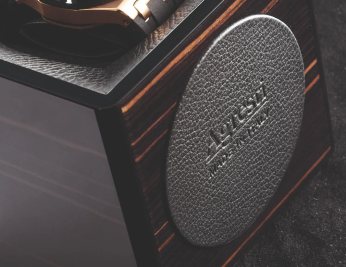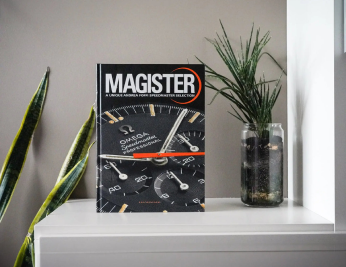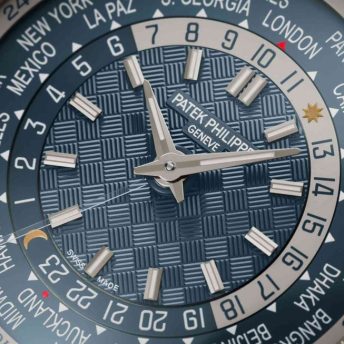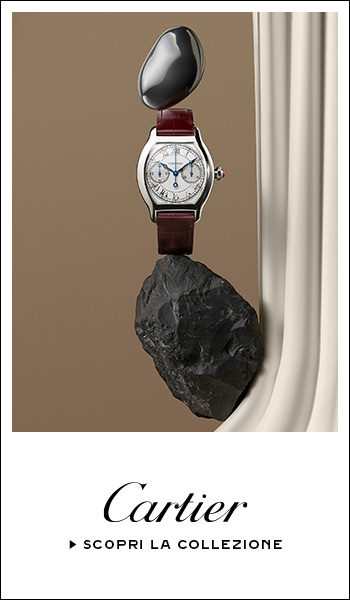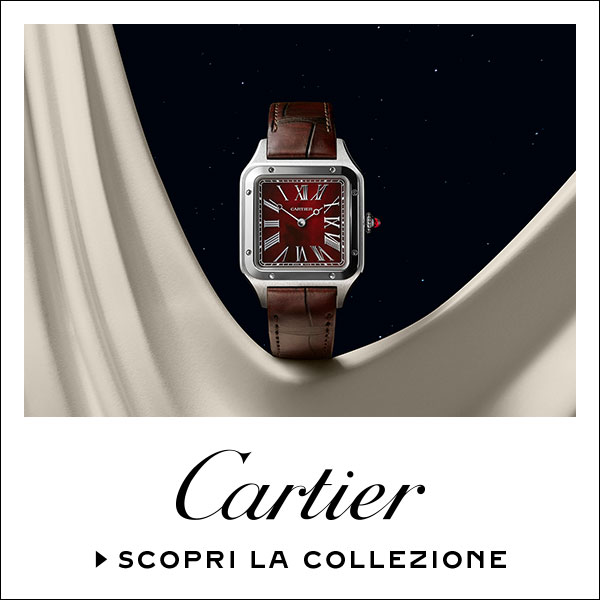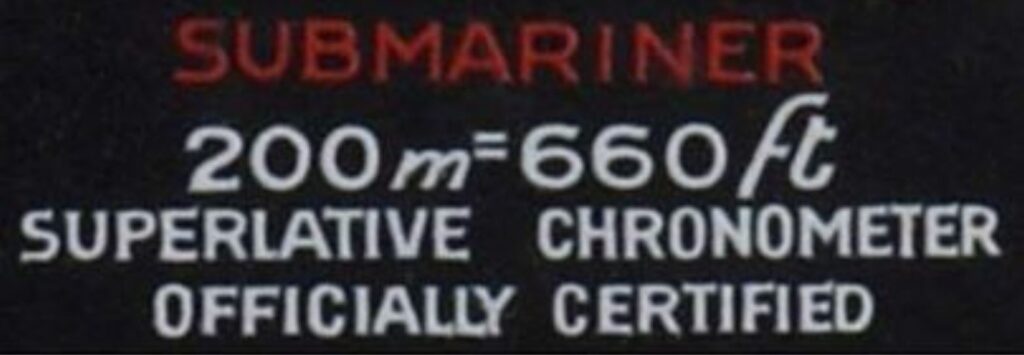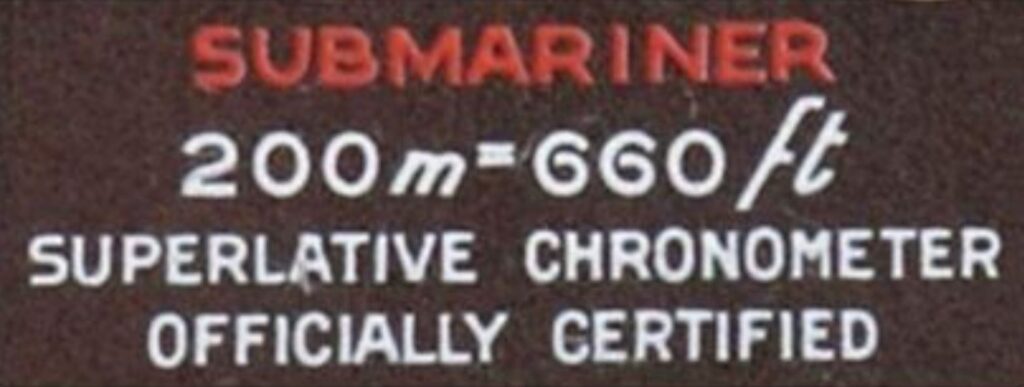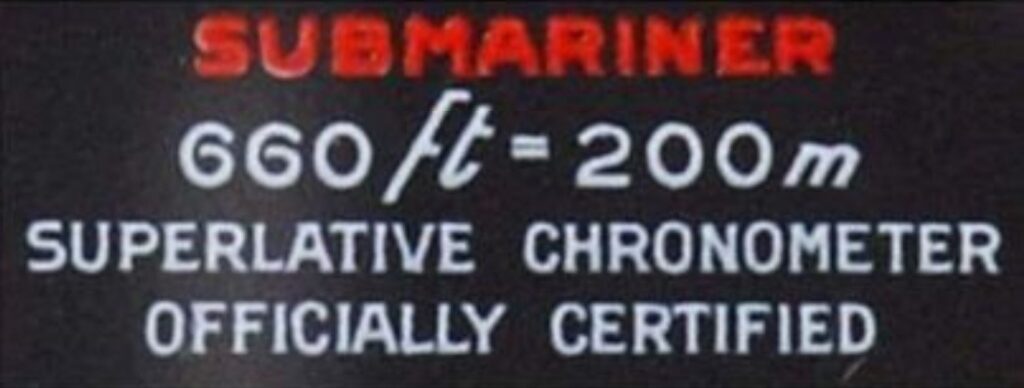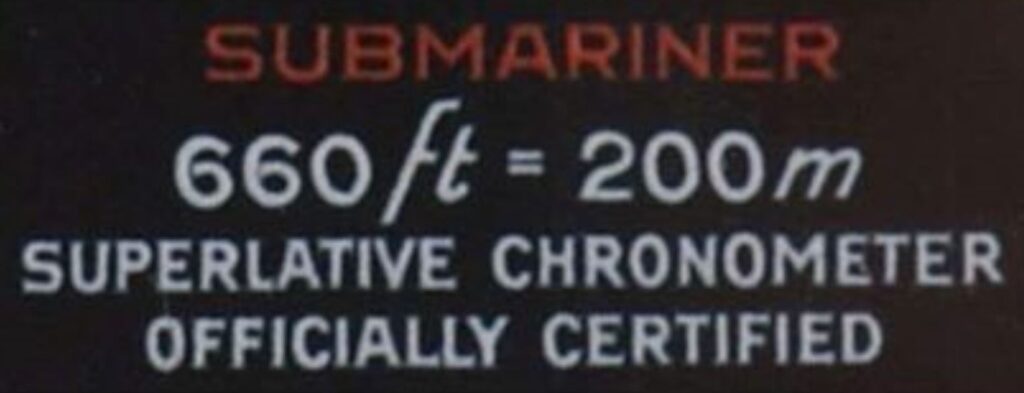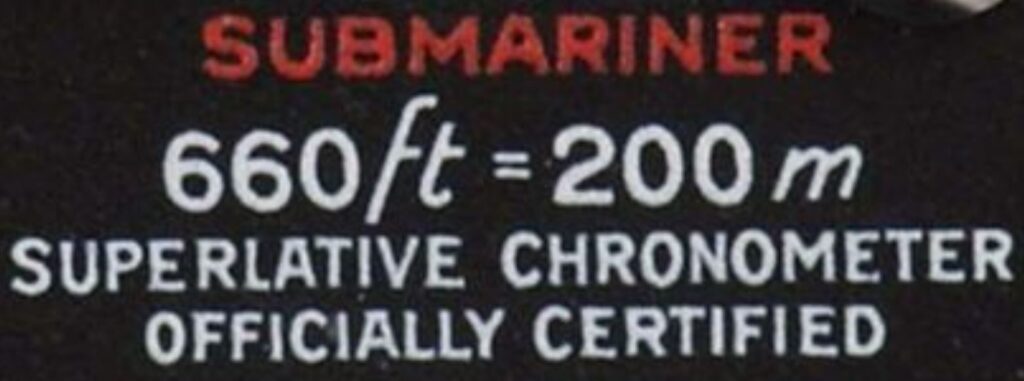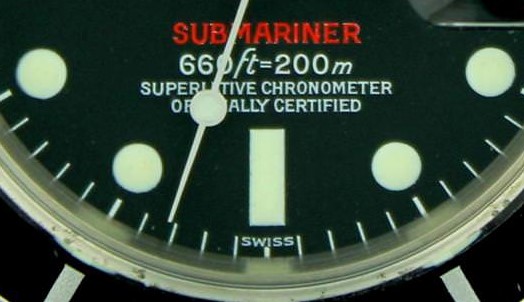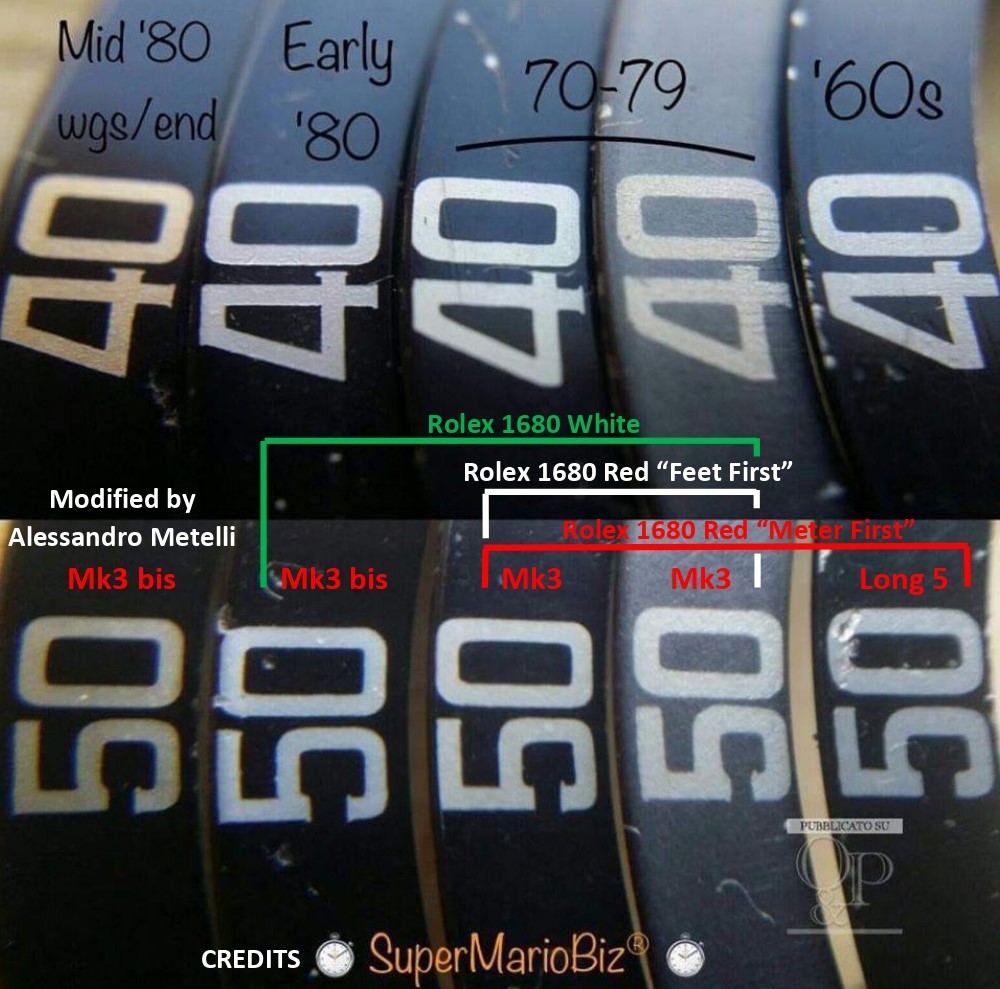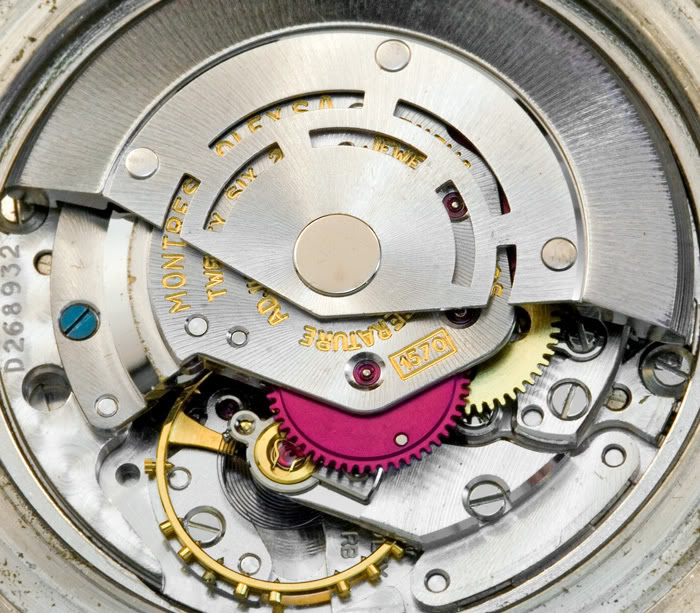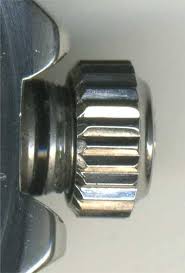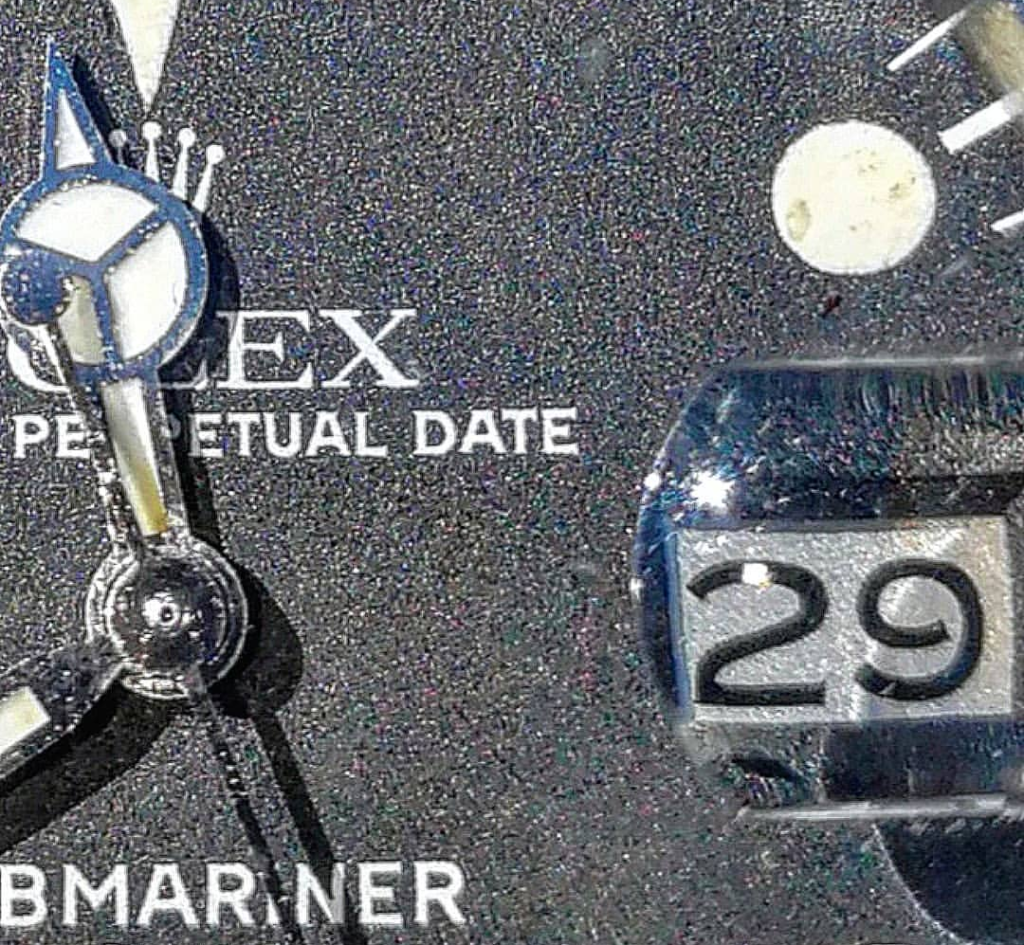After having gone through all the various characteristics of the Rolex Submariner 1680 “White”, which you can find here, we move on to a fully comprehensive guide to its bigger brother: the Rolex “Red” Submariner ref. 1680.

The “Red” is indeed often considered to be the “White” Submariner’s bigger brother when viewed from a reference progression perspective. In fact, in similar fashion to the “Single Red” Sea-Dweller (which you can read more about here), the first Rolex “Red” Submariner ref. 1680 was first introduced in 1967.
Also, like a select few Sea-Dwellers, the Rolex Submariner ref. 1680 is by many accounts a “Transitional” reference, in that it’s the first Submariner to feature a “date complication”, magnified by the famous “Cyclops” lens.
This is a particularly tricky (but rest assured, we have you covered) reference to learn about, as over the years, many different dial, inserts and bracelet configurations were employed onto this model.
Nevertheless, you ready?
The Dials
In the world of watch collecting, an iteration or type of dial is categorised by the prefix “Mark” (often abbreviated to “MK”), and the Rolex “Red” Submariner ref.1680 has an impressive 6 Marks: 3 “Meter First”, where the depth rating is in meters first, followed by the equivalent in feet, and 3 “Feet First” Marks (vice versa).
MARK I “Meter First” Singer (until 1969)
One quick way to identify a MK1 dial is to observe the font of the“ft” on the depth rating: it’s the only one out of the 3 “Meter First” Marks in which the “f” in “ft” curls above the “t”. The Mark 1 is also unique in various other aspects: it’s the only one out of the three to have “closed sixes”, and whose “Submariner” stamp width matches that of the depth rating, the latter of which is imprinted onto a white base.
MARK II “Meter First” Singer (1970)
The MK2 and MK3 dials are very similar to each other, but there are the tiniest of subtle details that make them distinguishable from one another. Rolex’s crown logo of the MK2 is slightly broader; the “660” of the depth rating has “open sixes”; the “Submariner” writing (also imprinted on a white base) is slightly shorter in width compared to the depth rating, and the “f” in “ft” stops perfectly in line with the “R” of “Submariner”.
MARK III “Meter First” Singer (1970)
As previously mentioned, the MK3 is very similar to the MK2 with its “open sixes” and slightly shorter “Submariner” writing, but there are 3 fundamental differences that make it different to the MK2:
- the top of the “f” in “ft” ends visibly behind the (second) letter “R” in “Submariner” (whereas in the MK2 they are perfectly aligned);
- lower curvature of the letter “t” in “ft” is significantly narrower than the MK2;
- the MK3 is the only “Meter First” dial with a “full red” “Submariner” title with no white base layer.
MARK IV “Feet First” Singer (1971-1972)
This was the first dial which donned the “feet” depth rating before that of the “meters”one. The immediate sign of a MK4 dial lies in these very “ft”: unlike the MK5 and MK6, the lower horizontal member of the “f” and the one of the “t” are visibly offset from each other, whereas the in the other two they are co-linear (at the same height). In this dial configuration, the “660” features “open sixes” and the “Submariner” is printed on a white base layer.
MARK V “Feet First” Beyeler (1971-1973)
Like the MK4, the MK5 also features an “open sixes” depth rating (albeit less of a gap compared to its predecessor). The easy way to differentiate between a MK4 and a MK5 dial is by observing the horizontal members of the “ft” term: the ones of the MK5 are co-linear. Moreover, the “Submariner” writing is stamped directly in red (no white base layer).
MARK VI “Feet First” Lemrich (1973-1976 circa)
The MK6 is the last iteration of the “feet first” dials. This is immediately and unmistakeably identifiable as it is the only one to feature “closed sixes” in the depth rating. Similar to the MK5, the “Submariner” name is stamped directly in red (no white base layer).
Service Dial
But, there is another! The “Service” dial, which features “Luminova”: how can we tell? MARKS I through VI have the “Swiss-T<25” stamp just below the 6 o’clock position (indicative of Tritium), whereas this particular dial reads just “Swiss” (indicative of luminova).
Possible Prototypes?
Some photos have surfaced of very peculiar dials of the Rolex “Red” Submariner ref. 1680, dubbed “MK0”. These are incredibly rare configurations belonging to the “Meter First” family. The main feature, or lack thereof, is the minute track. The one in the left-hand-side photo is considered to be even more rare due to it not only bearing a unique “Swiss Made” stamp (instead of the regular “Swiss-T<25”), but it also features an outer ring whose circumference perfectly matches that of what should be the minute markers.
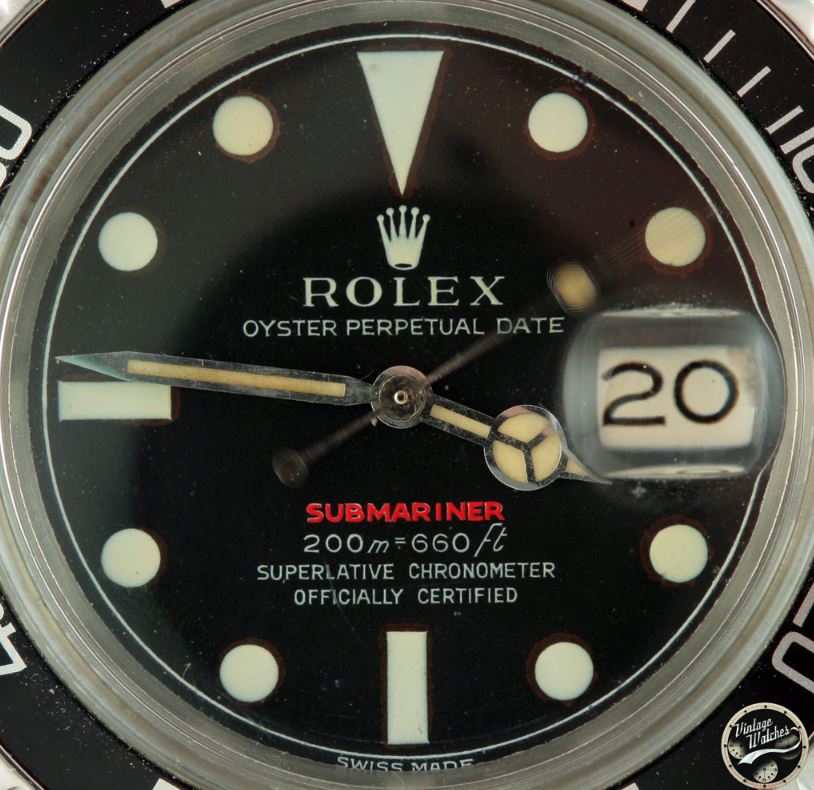
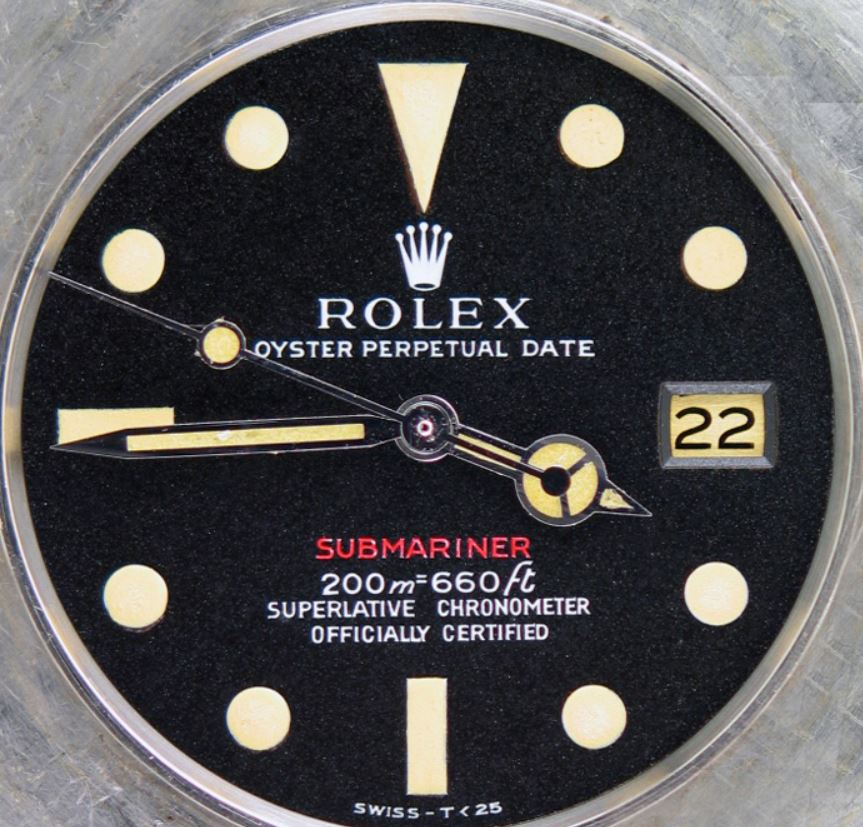
The Inserts
The inserts on the Rolex “Red” Submariner ref. 1680 vary depending on the production year. Up until 1969/1970, therefore in the “Meter First” family, the insert is the famously rare “Long 5” (this component alone can cost up to €2,000 depending on the condition). We can recognise this type of insert by comparing the “belly” of the 5 (in 50) to those of the other inserts: this first edition contains a slightly larger and longer curvature. In addition to this characteristic, that same “belly” is thicker than the others, aptly named “Fat“.
Instead, for the “Feet First” family of the Rolex “Red” Submariners, collectors refer to the proper insert as the “MK3” (you know, just to make it more confusing), which were mounted on both the “Red” and “White” 1680s up until the 1970s. The price of a MK3 insert can reach over €1,000 for an excellently preserved one. We can identify a MK3 insert by the “Fat” font, as well as the internal perimeter of its 4s being triangular.
As an aside, as mentioned in our article “Everything you need to know about the White Submariner 1680“, when it comes to the “MK3 Bis” “fat” inserts, there are two schools of thought: there are those who think that it can be mounted on a White 1680 made towards the end of 1979 (transitionally with the ref. 16800), and those who think that the only acceptable insert for any 1970s-made 1680 is the MK3.
The Movement
Powering the Rolex “Red” Submariner ref. 1680 is the cal. 1575, a variation of the (time-only) 1570 which includes a “date” function. One thing worth noting is that, until 1970, this caliber didn’t include a “Stop Seconds” complication: this was added from 1971 onwards. This means that in the “Meters First” family, as you are setting the time, the seconds hand keeps on wirring around (with very few exceptions in the transitional years of 1970-71). One oddity, though: despite it being named the cal.1575, the bridge of the automatic movement is engraved with “1570”.
The Bracelets and Clasps
There are two traditional types of bracelets for the Rolex “Red” Submariner ref. 1680:
- Ref.7206 with type 80 end links: these are riveted steel links (from 1967 to 1969);
- Ref.9315 with type 280-380 end links: these are folded steel links (from 1970 to circa 1976)
- Ref.93150 with type 580 end links: these are full steel links which, in the transitional year of 1976 with the “White Writing” variant, you could find a “Red” 1680 with this type of bracelet. But, traditionally, a seventies’ “Red” 1680 would have to be paired with a folded link 9315 bracelet.
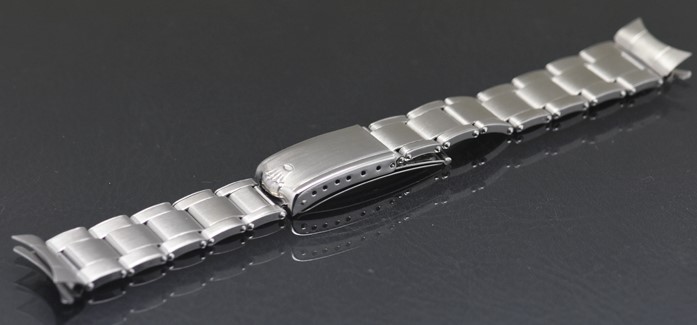
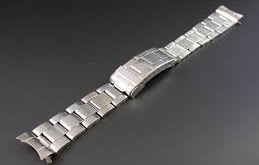
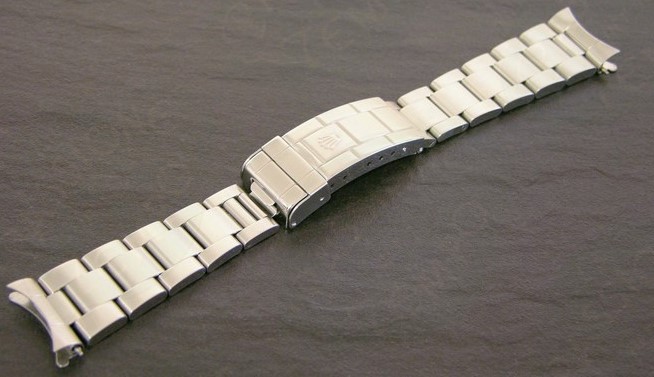
As far as the clasps go, this is what we can find:
- In the “Red” Submariners (1967-1975), we find an engraving of the year and quarter in which it was produced. For example: 1 over 72 indicates that the bracelet was manufactured in the first quarter of 1972.
- From 1976 onwards, this classification became alphabetical: VA=1976, VB=1977, VC=1978, VD=1979.
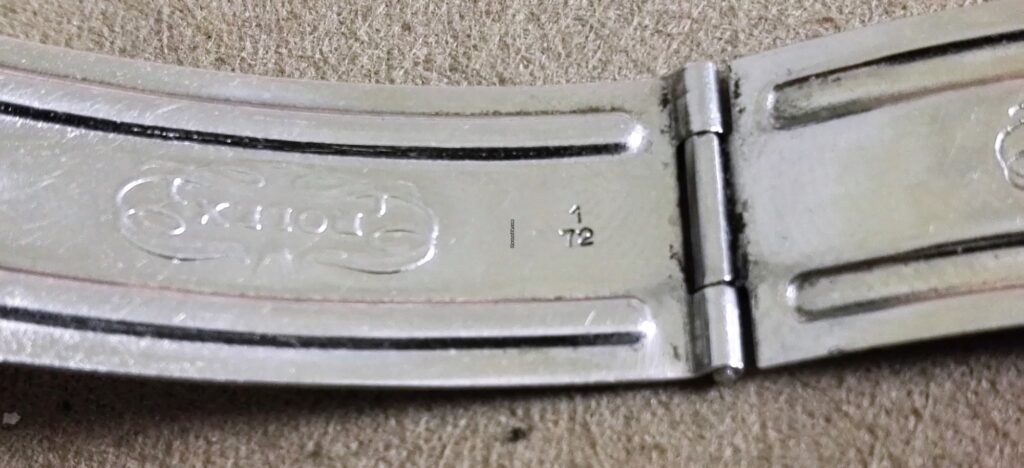
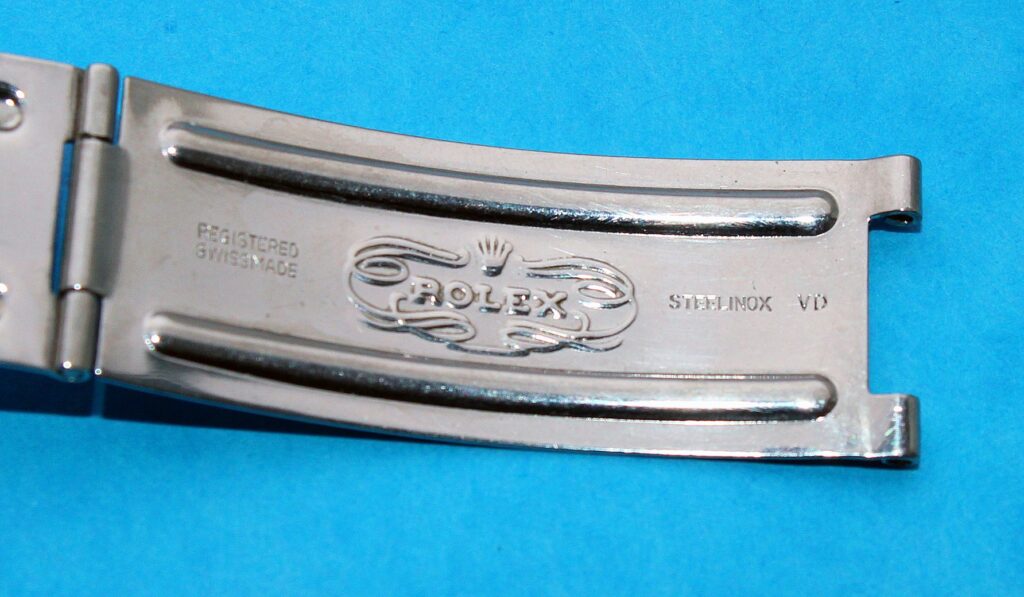
The Crowns
Rolex Submariner 1680 sported two types of crown over the course of its production: the “Twinlock” and the “Triplock“.
The “Twinlock” Ref.24-700 is present on the pieces produced between 1967 and 1971. It measures 7mm in diameter and is identifiable by the absence of the 3 dots underneath the crown logo, as well as a shorter threaded column, without an extra inner tube.
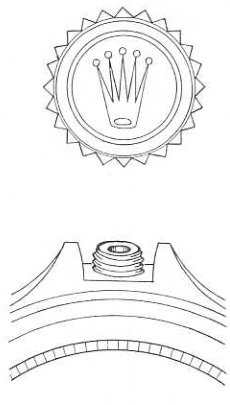
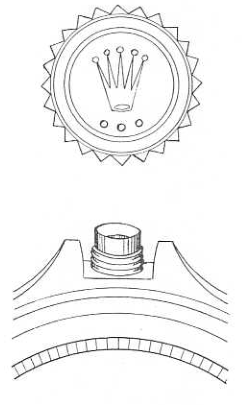
The first generation of the “Triplock” Ref.24-701/702 was introduced in around 1972, and is recognisable in that it’s the opposite of the Twinlock: the crown logo indeed features the 3 dots and it has it has a longer thread with a tall inner sleeve. The only common trait? Still 7mm across. In the beginning of the 1980s, the second iteration of the “Triplock” Ref.24-703 was introduced: the first to include an o-ring seal.
We can find examples of the ref. 1680s with a second generation “Triplock” Ref.24-703 crown only if it underwent a service in the 1980s.
So, on the off-chance that you are holding these three crowns, you can identify them using the following:
First, evaluate the length of the threaded column; if it’s short and the crown lacks the three dots, you have a “Twinlock” Ref.24-700 from the ’60s. If it bears the 3 dots, and the longer column has an inner sleeve, but no gasket, it’s a first generation “Triplock” Ref.24-701/702 from the 1970s. Finally, if it’s like above, with a gasket, you’ve got a 1980s second generation “Triplock” Ref.24-703.
The date-wheel
As explained in our article on the “White” 1680 Rolex Submariner (this one), in order to ensure authenticity and that the date-wheel matched the date of production, it had a silver background and featured “open” sixes and nines.
Other Peculiar Characteristics
- All the Submariner ref. 1680s have a depth rating of 200m;
- The bezel is “Bidirectional” (can rotate both clockwise and counterclockwise);
- The glass is “stepped”, with component code 127, typical of the ref. 1680;
- Until 1969, the cases of the “Red” 1680 Submariners were thinner than those of the 1970s (they were the same ones used for the ref. 5512 and 5513 during the ’60s). They measure 40mm in diameter;
- Between 1967 and 1972 the inner surfaces of the casebacks were marked with “1680” and featured the same nomenclature as the clasps. From 1973 onwards, only the “1680” engraving remained;
- In 1969, Rolex released an 18kt yellow gold version of the 1680 with a matte black “Meter First” dial and “Nipple” indices. This was also the first all-gold Submariner ever.
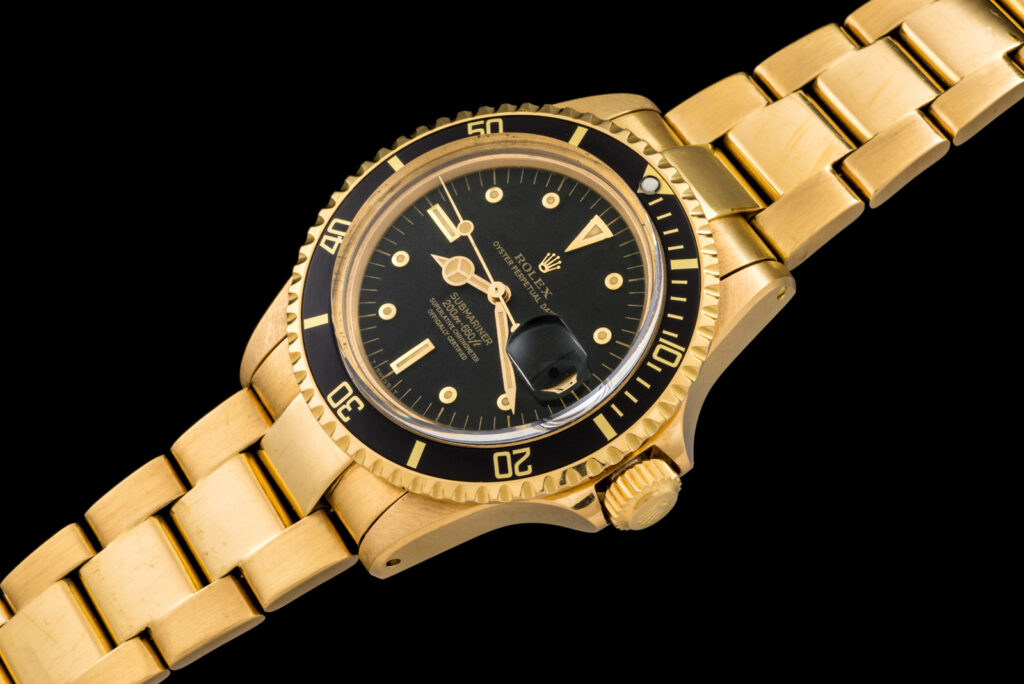
– Translated by Patrick R.
Follow us on Instagram not to miss any real-time update from the world of watchmaking.

